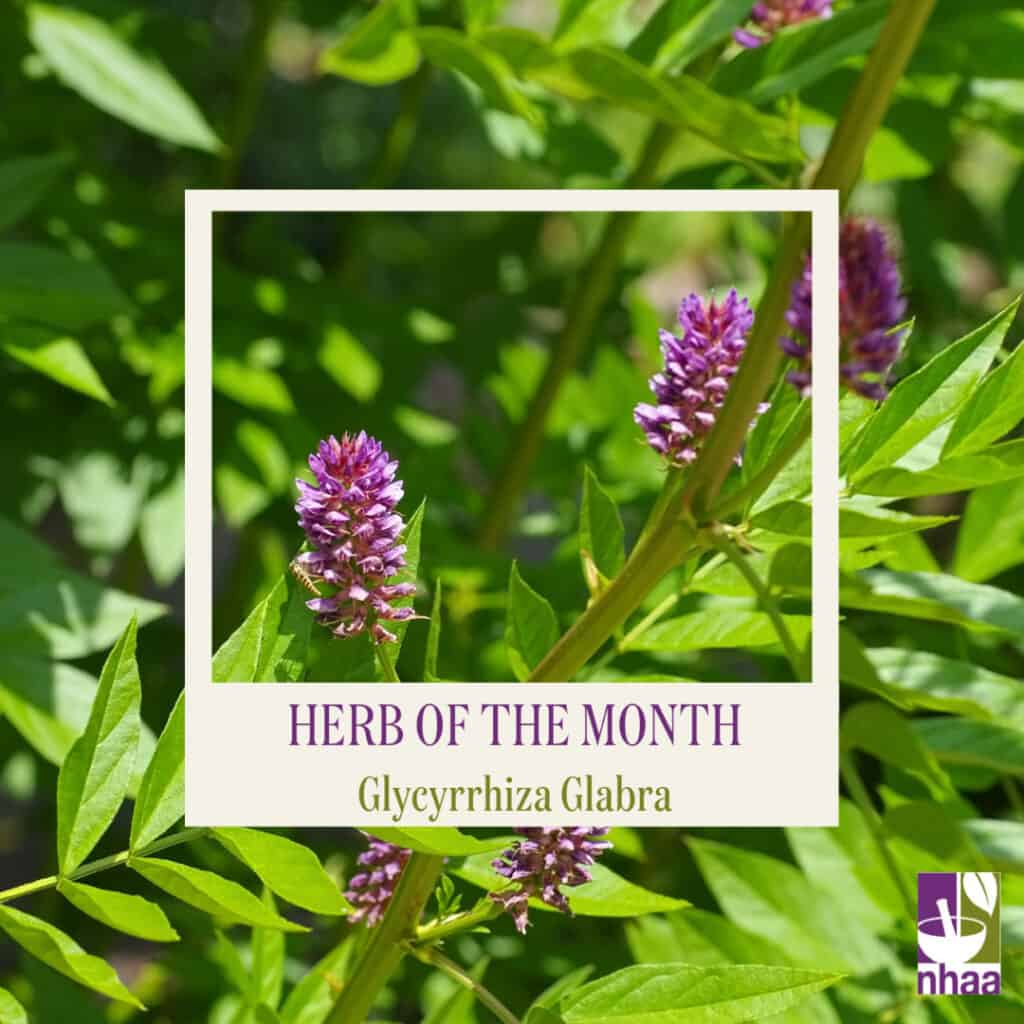
🌿This month’s herb of the month is Licorice, or Glycyrrhiza glabra.
Quick quiz: which herb contains a constituent that is 50 times sweeter than sugar?
The answer is Licorice, which is this month’s herb of the month.
🌿Botanical name and description:
Licorice (Glycyrrhiza glabra), is native to southern Europe and parts of Asia, but is today widely cultivated due to its use in confectionary. A member of the Fabaceae (bean and pea) family, it is a perennial herb that grows to 1.5m tall.
🌿History and traditional use:
Licorice has a long history of therapeutic use in many Eastern and Western medical traditions, including the European, Chinese and Indian medical traditions. The dried roots and rhizomes of the herb have been employed clinically for over 4,000 years, and it remains today one of the world’s most frequently prescribed herbal medicines. Traditionally, licorice has been valued as a soothing remedy for the body’s mucous membranes, and as a tonic to support the nervous system and adrenal glands. It has also been used in all three medical traditions above to sweeten and synergise herbal blends.
🌿Key constituents:
A diversity of biologically active phytochemical constituents have been isolated from licorice. 40-50% of the herb’s dry weight is comprised of a water-soluble compound that includes triterpene saponins, phenols including flavonoids and coumarins, saccharides, pectins, amino acids, mineral salts, and volatile oils, amongst other substances. While many of these contribute to the herb’s actions, of particular importance is the triterpenoid saponin glycyrrhizin (glycyrrhizic or glycyrrhizinic acid).
Glycyrrhizin is a major component of licorice root (comprising 2-9%) and is considered to be the herb’s most active constituent. Pharmacokinetically, glycyrrhizin is hydrolysed by intestinal bacteria with specialised beta-glucuronidases to its aglycone and primary metabolite, glycyrrhetic (glycyrrhetinic) acid. Glycyrrhetic acid is 200 to 1000 times more potent than glycyrrhizin, and is therefore responsible for many of the herb’s pharmacological properties.
🌿Actions and usage:
Among its various actions, licorice is valued for its adaptogenic and anti-ulcer effects. It is glycyrrhetic acid that is primarily responsible for the herb’s adaptogenic action. Although it has no natural glucocorticoid action, glycyrrhetic acid acts as an adaptogen primarily by altering the metabolism of the glucocorticoid hormone cortisol, one of the key mediators of the body’s stress response. Specifically, glycyrrhetic acid inhibits the 11beta-hydroxysteroid dehydrogenase type 2 enzyme, which catalyses the conversion of cortisol to cortisone, its inactive metabolite. This delays excretion and potentiates the activity of cortisol, which is beneficial in the initial stages of stress because it instigates negative feedback mechanisms that facilitate stress management. Licorice has also been valued for over 2000 years for its anti-ulcer activity, and the herb’s use in the prevention and treatment of ulcers is described in various pharmacopoeias and traditional medical systems.
🌿Science and clinical trials:
There is an increasing body of research evidence on the therapeutic effects of licorice, in areas as diverse as the herb’s antiviral activity, effects on liver health and function, and potential benefit in the management of body weight and arthritis.
Regarding the herb’s anti-ulcer activity, recent studies indicate that licorice root is able to inhibit Helicobacter pylori, one of the two principal causes of gastrointestinal ulcer. A 2012 randomised double-blind placebo-controlled trial of 100 patients concluded that Licorice was 73.2% more effective in decreasing Helicobacter pylori gastric load than a placebo (1) and a 2014 double-blind clinical trial found the herb to be as successful at eradicating Helicobacter pylori as bismuth (2). Another 2016 trial demonstrated that licorice was an effective adjust therapy in the control of Helicobacter pylori (3).
(1) Puram, S., Suh, H., Kim, S., Bethapudi, B., Joseph, J., Agarwal, A., & Kudiganti, V. (2013). Effect of GutGard in the Management of Helicobacter pylori: A Randomized Double Blind Placebo Controlled Study. Evidence-Based Complementary & Alternative Medicine (Ecam), 2013, 1-8.
(2) Momeni, A., Rahimian, G., Kiasi, A., Amiri, M., & Kheiri, S. (2014). Effect of licorice versus bismuth on eradication of Helicobacter pylori in patients with peptic ulcer disease. Pharmacognosy Research, 6(4), 341-344.
(3) Hajiaghamohammadi, A., Zargar, A., & Oveisi, S. (2016). To evaluate of the effect of adding licorice to the standard treatment regimen of Helicobacter pylori. Brazilian Journal of Infectious Diseases, 20(6), 534–538.